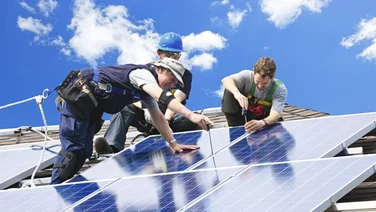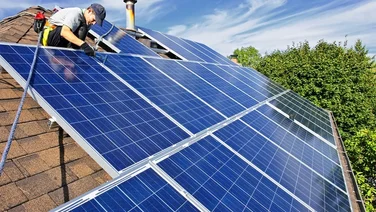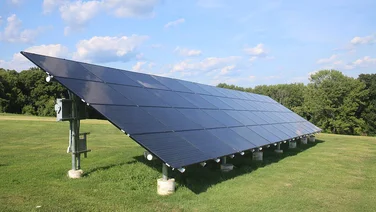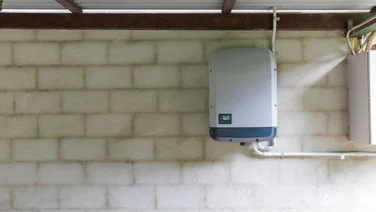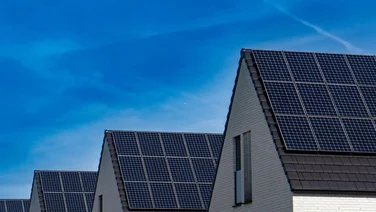- What is a conservation area?
- Are you allowed solar panels in a conservation area?
- Regulations for installing solar panels in the UK
- Additional regulations for installing solar panels in conservation areas
- Who to contact if you’re still not sure
- How to check whether you live in a conservation area
- Summary
✔ You need to get planning permission to get panels in a conservation area
✔ If your property is listed, additional considerations may apply
✔ Speak to your local council and a qualified installer for up-to-date guidance
If you live in a conservation area (or somewhere usually of natural or historic beauty), you may be wondering if you’re allowed solar panels and how solar panels work. We’ve detailed everything you need to know in this article.
If you’re looking into solar panels you can easily compare the best prices by filling out your details in our easy-to-use quote tool. Our trusted suppliers will get in touch with you with free quotes for you to compare.

What is a conservation area?
A conservation area is a designated area that is protected due to its historical, architectural, cultural, or environmental significance. They are designated by local planning authorities (usually city or district councils) under the provisions of the Planning (Listed Buildings and Conservation Areas) Act 1990.
The primary objective of a conservation area is to safeguard the area’s heritage and character while allowing for appropriate development that complements its existing features.
This means conservation areas are subject to stricter planning regulations and guidelines to ensure that changes and developments within the area respect and preserve its character. This can include restrictions on building alterations, demolition, and new constructions.
Are you allowed solar panels in a conservation area?
Yes, it is possible to install solar panels in a conservation area, however there are specific considerations and regulations that you need to be aware of.
In most cases, you will need to obtain planning permission from the local planning authority before installing solar panels. Planning authorities will assess the proposed installation’s impact on the character and appearance of the area.
The design and positioning of the solar panels are critical. Panels should be carefully integrated into the existing architecture and not compromise the visual integrity of the area. Panels should also not be highly visible from public viewpoints, if possible.
The type pf solar panel and materials is important. Opt for panels that blend well with the existing architecture and use materials that match or complement the building’s character. The size and scale of the solar panels should be appropriate for the building and the area.
Depending on the local authority’s practices, there might be a requirement for public consultation before planning permission is granted for solar panel installations in conservation areas.
It’s advisable to seek professional advice from architects or planning consultants who are experienced with conservation area regulations. They can help you navigate the planning process and design solar panel installations that meet the necessary criteria.
Regulations for installing solar panels in the UK
Whether your property is in a conservation area or not, building regulations will apply to ensure the safety and structural integrity of the solar panel installation. These regulations cover issues such as the weight of the solar panels, electrical safety, and fire protection.
An installer who is registered with a recognised Competent Person Scheme (CPS) can self-certify that the installation meets building regulations.
If you want to benefit from Government incentives like the Smart Export Guarantee (SEG), where you can be paid for any surplus energy you generate and export to the grid, your solar panel installer must be MCS (Microgeneration Certificate Scheme) certified. This ensures that the installation meets certain quality and safety standards.

Additional regulations for installing solar panels in conservation areas
As well as the regulations mentioned above that are specific to conservation areas, additional regulations apply. Firstly, solar panels should not be highly visible from public viewpoints (if possible), and they can’t be on a wall which faces the road. They also can’t be installed on a site designated as a scheduled monument, or on a listed building without listed building consent.
Depending on the significance of the conservation area, a heritage impact assessment might be required. This assessment evaluates the potential impact of a solar panel installation on the heritage value of the conservation area as a whole.
Who to contact if you’re still not sure
If you’re still unsure about whether you can get solar panels on your home in a conservation area, it’s a good idea to reach out to the relevant authorities and professionals who can provide accurate information and guidance.
Contact your local planning authority. They are responsible for designating conservation areas and enforcing planning regulations within them. They can inform you about the specific rules and requirements for installing solar panels in your conservation area.
Contact solar panel installation companies that are certified under the Microgeneration Certification Scheme (MCS). These professionals are familiar with regulations and can offer advice on compliance, design, and feasibility.
Remember to provide as much information as possible about your property and its location to the authorities or professionals you contact. They can offer advice based on your specific circumstances.
How to check whether you live in a conservation area
There are around 10,000 conservation areas in the UK. To determine whether you live in one, you can follow these steps:
- Visit the website of your local planning authority. Most local councils provide information about conservation areas, including maps and details about designated areas.
- Reach out to your local planning authority directly. You can contact them via phone or email and inquire whether your property is located within a conservation area.
- Check any relevant paperwork you have for your property. Your property deeds or legal documentation might mention if your property is located within a conservation area.
Summary
Solar panels are a great way to heat a house, lower your carbon footprint and save you money on your bills. The best part is that you can still get them on your property if it’s in a conservation area. Just make sure you speak to your local planning authority and work with professionals that have installed solar panels in a conservation area before, to ensure they meet regulations.
If you’re looking into buying solar panels, our trusted suppliers can easily help you compare the best prices. Simply fill out your details in our easy-to-use quote tool and they’ll get in touch directly with free quotes.

